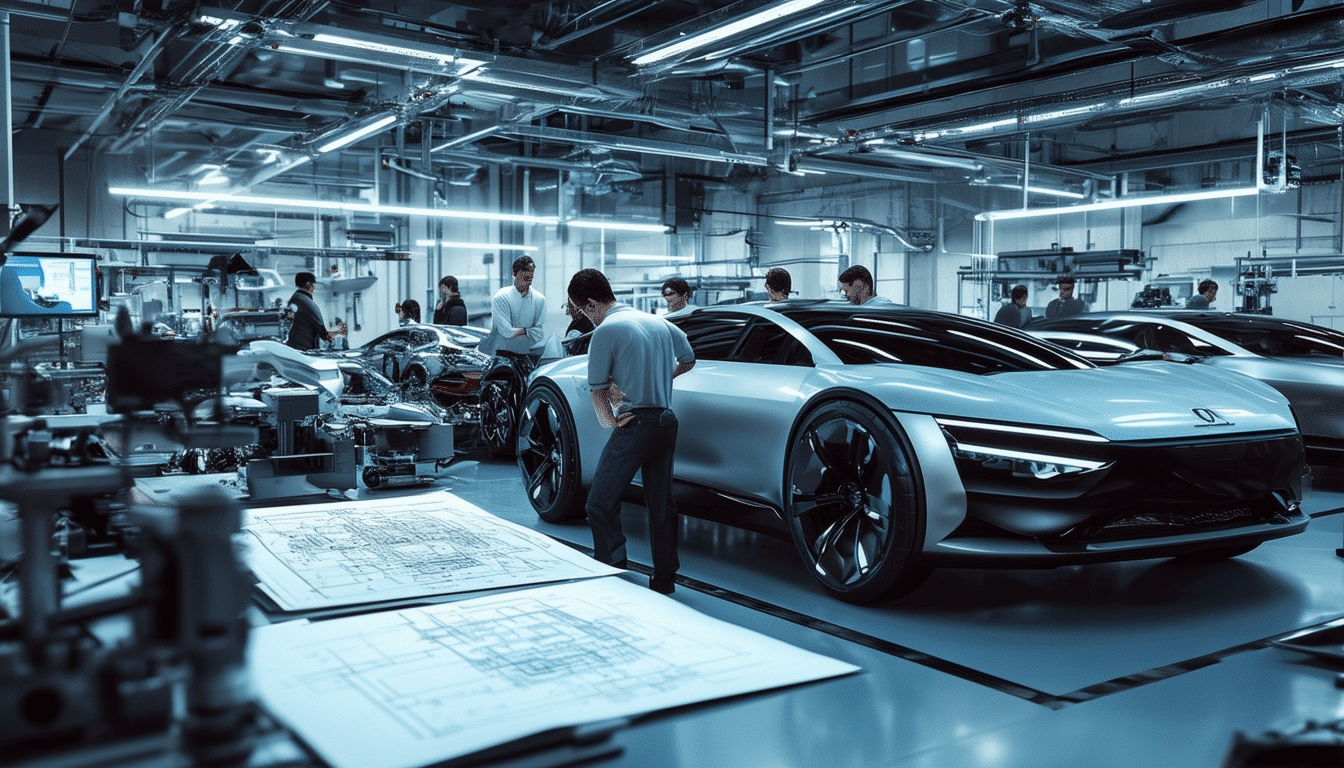Where do the advancements in the motor world really come from? Discover the surprising truth behind automotive innovation.

The history of automotive engineering has always been closely linked to the constant search for new technologies that transform the driving experience. In popular imagination, many of these innovations are associated with the world of competition, a territory known for its breakneck pace and insatiable appetite for excellence. However, reality reveals that not all the advancements we see today in production vehicles have their roots in racing. Elements such as carbon fiber, fuel injection, or aerodynamics indeed come from that relentless realm, but there are other components and systems whose origins are much more surprising, thus breaking with conventional beliefs.
Many of the technical advances we find today in our production cars, from carbon fiber to ABS brakes, have fascinating origins, generally linked to the historical desire to push boundaries. However, part of this technology does not come from automotive competition, as commonly believed, but from unexpected seas of innovation and creativity. Below, we break down the surprising origins behind some of the most emblematic advancements in the automotive world.
The Origin of Carbon Fiber and Aerodynamics
Carbon fiber is known for its role in high-end sports cars, where its lightness and strength make it invaluable. Although used in competitive motorsport, its beginnings trace back to broader industrial and sports applications. The quest to improve aerodynamics is not limited to racetracks. In reality, it has been present in aerospace studies that sought to understand how air interacts with different surfaces and shapes.
Common Misconceptions: ABS Brakes and Power Steering
The Surprising Origins of ABS Brakes
The current ABS brakes originally prevented airplanes from locking their wheels during landing. Developed in the 1950s, their first automotive use did not occur until the 1960s, with Jensen leading in their model FF.
Power Steering in the Luxury Market
Power steering is another component whose history is not tied to racing. This crucial component first appeared in luxury vehicles, starting its journey in a Chrysler Imperial from 1951, long before it became a standard in mass-production vehicles.
Early Advancements: Windshield Wipers and Disc Brakes
Although one might assume that wipers were invented for race cars, they actually originated in 1903 by American inventor Mary Anderson. It was Cadillac, in 1922, who popularized their use in street cars.
Meanwhile, the disc brakes patented for the first time in 1901 did not reach the streets until 1949. Chrysler was the first brand to adopt them for the mass market.
Automatic Transmission and Traction Control
Innovation in Transmission
Automatic transmission, known for its convenience, did not arise from the realm of competition, but from the need to ease driving in daily use. General Motors pioneered with its Hydra-Matic transmission in 1940.
Traction Control: Anticipating the Future
Buick, part of General Motors, developed the traction control MaxTrac in the 1970s to improve safety by detecting rear wheel slip, long before it was included in competition systems.
Engine Turbocharging
Finally, the turbocharging of engines that increases power without raising displacement also has historical roots. Although common in modern racing, it was Mercedes who first incorporated this advancement in 1923, paving new paths in automotive technology.
The True Origin of Automotive Innovations
When we think of innovations in the automotive world, we tend to associate them with the realm of competition, whether Formula 1 races or rallies. However, the reality is that many of the advancements that have been incorporated into production cars do not always stem from the racetracks. For example, carbon fiber, air filters, and aerodynamics are technologies that do come from competition, but not all have that root.
A common mistake is thinking that paddle shifters were first introduced in Formula 1. Although used there in the late 1980s, the version we know today emerged later in models like the 1995 Ferrari F355 Berlinetta. On the other hand, technologies like power steering or wipers were initially developed for the luxury car market, first seen in models like the 1951 Chrysler Imperial and the 1922 Cadillac, respectively.
As for the disc brake system, while we tend to associate it with the world of racing, it was patented long before, in 1901, and only made its debut much later in commercial cars. Similarly, the ABS technology, which one might think originated in motorsport, comes from the need to prevent passenger planes from locking their wheels during landing.
Other cases include automatic transmission, which was an innovation from General Motors in 1940, and traction control, introduced by Buick in the 1970s. Finally, although engine turbocharging is associated with racing in the 1960s, Mercedes was the first manufacturer to employ it in 1923.
Through these stories, it becomes clear that innovation in the automotive industry does not always come from where we expect. It is a journey of collaboration between different fields, where practical needs, engineering solutions, and industrial applications have come together to shape the cars we drive today. Surprisingly, many of these innovations found their place in everyday life much sooner than one might think, redefining the standard of what it means to drive a modern automobile.





